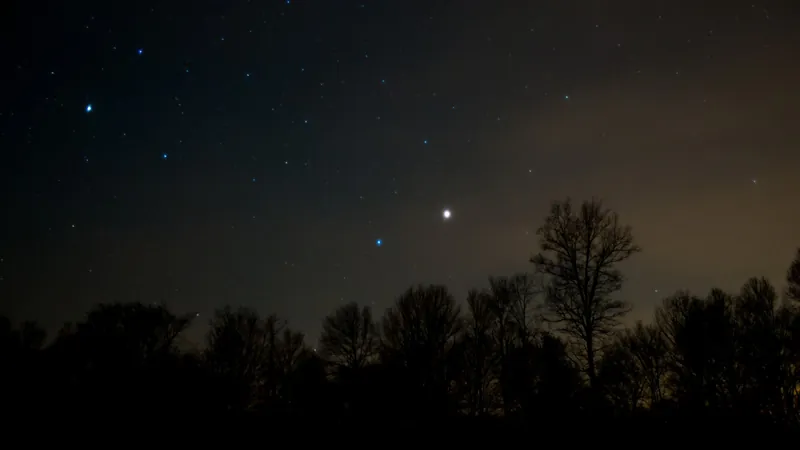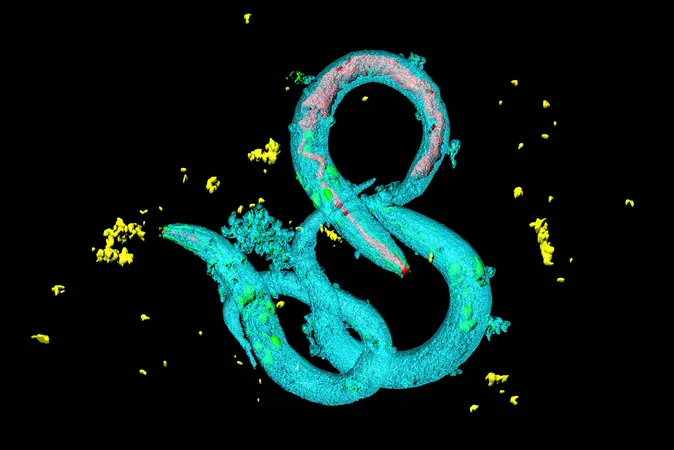
Watch Mars and Spica Dazzle at Sunset on September 13!
2025-09-12
Author: Yu
Get ready for a spectacular cosmic dance as Mars and the brilliant blue star Spica light up the evening sky! On September 13, these celestial wonders will shine close together just after sunset, but you'll need a clear view of the western horizon to catch this vibrant duo before they vanish.
As the sun dips below the horizon, turn your gaze westward. Mars will be twinkling less than 10 degrees above the summer skyline, with Spica shining brightly to its lower left, nestled among the stars of the constellation Virgo. For those new to stargazing, remember: if you hold your clenched fist at arm's length, it covers about 10 degrees of the sky, while the width of your middle three fingers spans roughly 5 degrees.
Time is of the essence! Both Mars and Spica will sink below the horizon just over an hour after sunset, so find a high spot with an unobstructed view to catch this colorful pair before they slip away.
But wait, there's more! Spica isn't just any star—it's a dazzling binary star system that boasts a combined brightness over 12,000 times that of our sun! While it stands out as the brightest gem in the constellation Virgo, it's actually 250 light-years away and doesn't even make the top 10 list of the brightest stars seen from the northern hemisphere.
And let’s not forget Mars! The planet's striking red color is a result of iron minerals rusting in its rocks and soil—giving it that iconic appearance. However, the next few weeks will make spotting Mars a challenge as it moves closer to the sun in our evening skies. This trend leads up to the exciting solar conjunction in January 2026, when Mars will pass behind the sun from our viewpoint, re-emerging later as a stunning morning star before dawn.
Mark your calendars—this stellar sighting is not to be missed!


 Brasil (PT)
Brasil (PT)
 Canada (EN)
Canada (EN)
 Chile (ES)
Chile (ES)
 Česko (CS)
Česko (CS)
 대한민국 (KO)
대한민국 (KO)
 España (ES)
España (ES)
 France (FR)
France (FR)
 Hong Kong (EN)
Hong Kong (EN)
 Italia (IT)
Italia (IT)
 日本 (JA)
日本 (JA)
 Magyarország (HU)
Magyarország (HU)
 Norge (NO)
Norge (NO)
 Polska (PL)
Polska (PL)
 Schweiz (DE)
Schweiz (DE)
 Singapore (EN)
Singapore (EN)
 Sverige (SV)
Sverige (SV)
 Suomi (FI)
Suomi (FI)
 Türkiye (TR)
Türkiye (TR)
 الإمارات العربية المتحدة (AR)
الإمارات العربية المتحدة (AR)